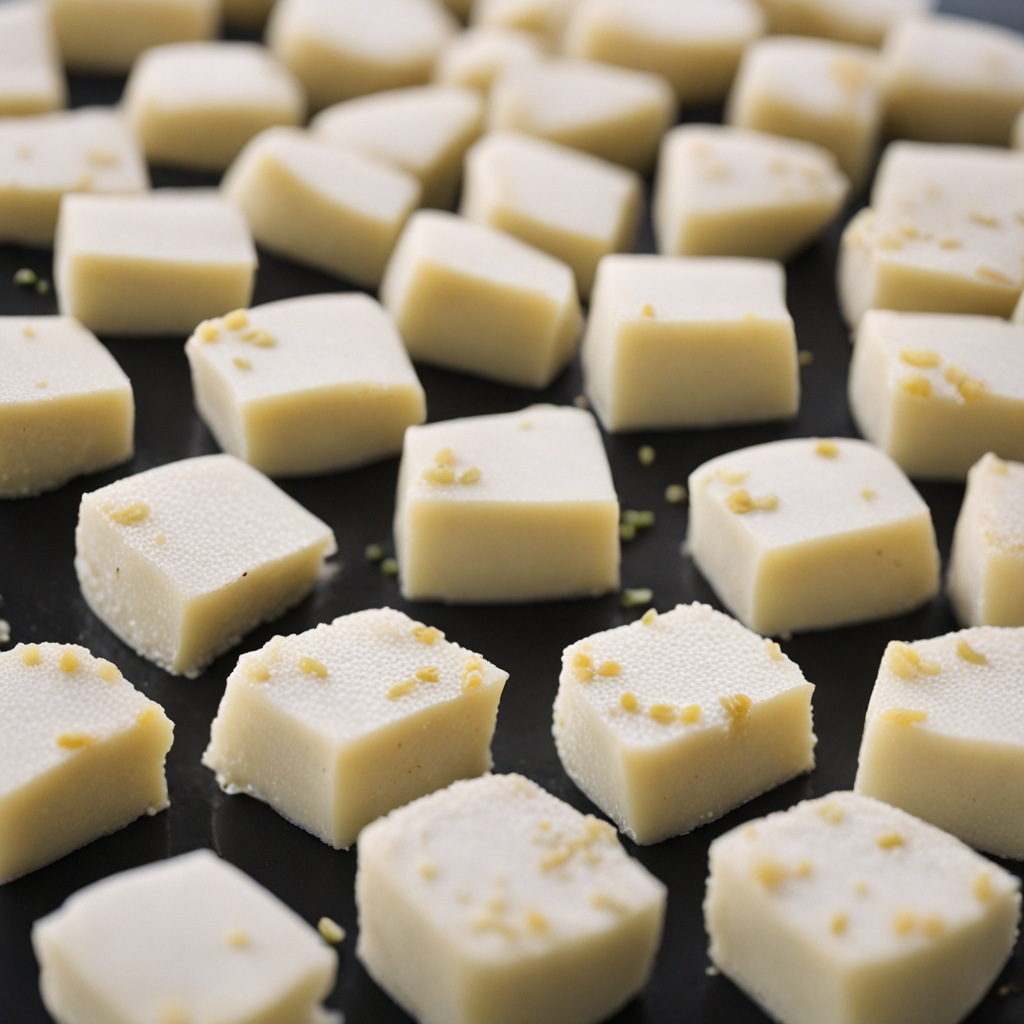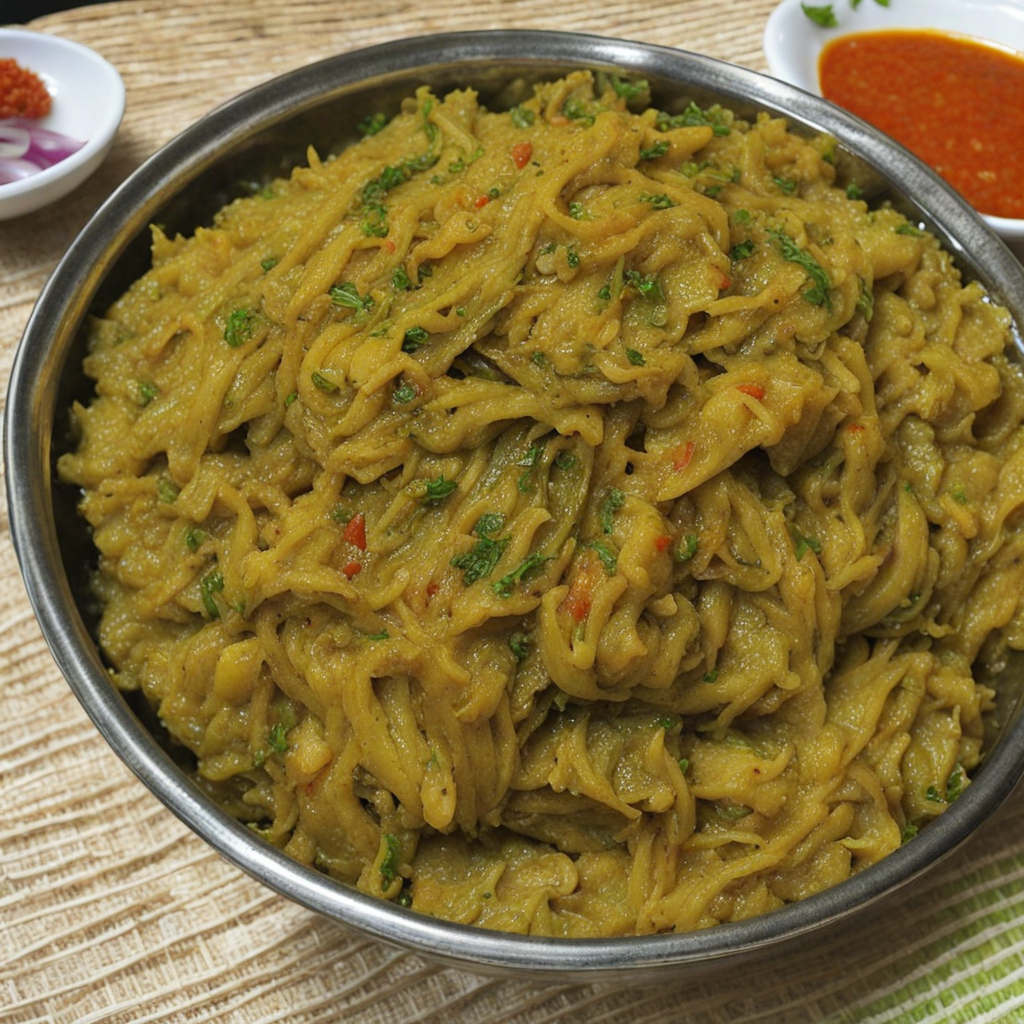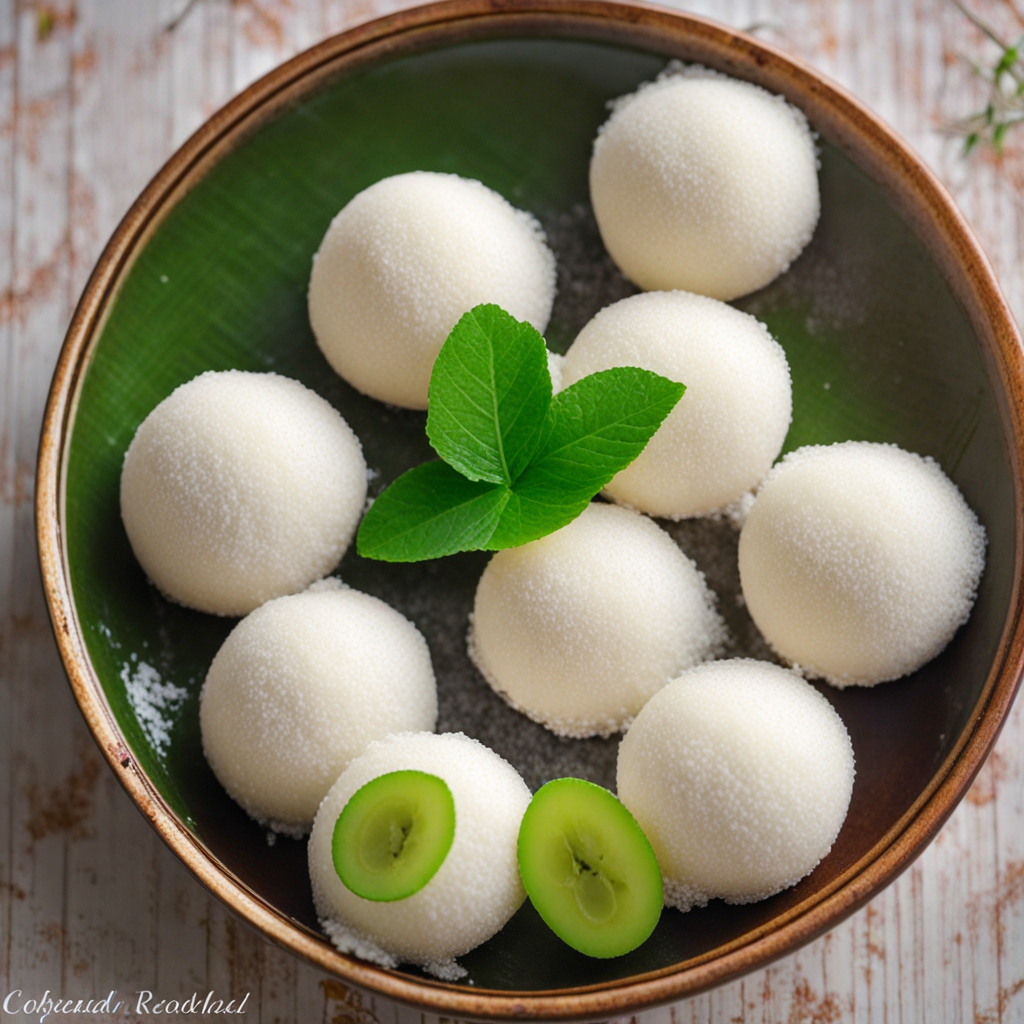Sandesh
Sandesh is a traditional Bengali sweet that exemplifies the rich culinary heritage of Bangladesh. Made primarily from fresh chhena, a form of curdled milk, this delicacy has a soft, crumbly texture that melts in your mouth. The process of making Sandesh involves kneading the chhena with sugar and flavorings, often including cardamom or saffron, to create a harmonious blend of sweetness and aromatic warmth. Its subtle sweetness is balanced by the natural richness of the milk, making each bite a delightful experience that is both comforting and indulgent. The presentation of Sandesh is as appealing as its taste. It is often shaped into delicate forms, such as small discs or intricate designs that reflect the artistry of Bengali sweets. Some variations may be embellished with slivers of pistachio or almond, adding a touch of crunch and a pop of color. The vibrant aesthetics not only enhance the visual appeal but also elevate the overall indulgence, making it a favorite for festive occasions and celebrations. Each piece is a work of art, inviting you to savor both its beauty and flavor. Sandesh can be enjoyed in various forms, from plain to flavored varieties like mango or coconut, which introduce unique taste profiles that cater to different palates. It is often served during festivals, weddings, and family gatherings, symbolizing joy and togetherness. The experience of indulging in Sandesh is not just about taste; it is a cultural journey that connects you to the heart of Bangladeshi culinary traditions and the warmth of its people.
How It Became This Dish
The Sweet Journey of Sandesh: A Culinary Heritage of Bangladesh #### Origins of Sandesh Sandesh, a traditional Bengali sweet, has fascinated food lovers for centuries. Its roots can be traced back to ancient Bengal, where the art of sweet-making evolved alongside the region's rich culinary traditions. The term "sandesh" itself comes from the Sanskrit word "sandesh," meaning "message," which is fitting given that sweets often convey sentiments of love, celebration, and festivity. The popularity of Sandesh is closely linked to the cultivation of milk and the dairy industry in Bengal. The fertile lands of the Ganges Delta provided ample resources for pastoral activities, leading to the development of dairy farming. The practice of making sweets from milk began with the preparation of various forms of chhena (fresh cheese), from which Sandesh is primarily made. This involved boiling milk and curdling it with lemon juice or vinegar, resulting in a soft, crumbly cheese that serves as the base for many Bengali sweets. #### Cultural Significance Sandesh is not merely a dessert; it is an integral part of Bengali culture and heritage. Its preparation and consumption are intertwined with various festivals, rituals, and celebrations. From the auspicious occasions of weddings and religious ceremonies to the everyday delights of family gatherings, Sandesh has a special place in the hearts of Bengalis. One of the most notable aspects of Sandesh is its association with the festival of Durga Puja, which celebrates the goddess Durga's victory over the buffalo demon Mahishasura. During this time, numerous sweet shops prepare elaborate varieties of Sandesh. The sweet is often shaped into intricate designs, symbolizing various aspects of the goddess and her divine attributes. The act of gifting Sandesh during this festival signifies goodwill and the sharing of joy among family and friends. Sandesh is also a symbol of hospitality in Bengali culture. When guests arrive, offering them Sandesh is a gesture of warmth and respect. The sweet transcends mere sustenance; it embodies the Bengali spirit of sharing and togetherness. Celebrating milestones, from birthdays to anniversaries, is often accompanied by the gifting of Sandesh, reinforcing its role as a cherished communal treat. #### Styles and Varieties Over the years, Sandesh has evolved into an array of styles and flavors, reflecting the diversity of Bengali culinary traditions. The most traditional form is the plain Sandesh, which is delicately flavored with cardamom and often garnished with slivers of pistachios or almonds. However, the versatility of this sweet has led to innovative adaptations, resulting in numerous varieties. 1. Nolen Gur Sandesh: One of the most beloved versions is the Nolen Gur Sandesh, made using date palm jaggery, which is harvested during the winter months. The unique flavor of Nolen Gur adds a distinct richness that elevates the taste of Sandesh, making it a seasonal favorite. 2. Bhapa Sandesh: Another popular variation is Bhapa Sandesh, which is steamed and has a softer texture. It is often flavored with coconut or fruit purees, offering a delightful twist on the traditional recipe. 3. Chocolate Sandesh: As global culinary influences began to permeate Bengali kitchens, modern variations like chocolate Sandesh emerged. This innovative take combines traditional chhena with chocolate, appealing to younger generations and those with a taste for fusion desserts. 4. Sandesh with Fruits: The inclusion of fruits such as mango, lychee, and even berries has become increasingly popular, showcasing the adaptability of Sandesh to contemporary palates. #### The Evolution of Sandesh The evolution of Sandesh can be traced through the history of Bengali society, particularly during the British colonial period. As urbanization increased, so did the commercialization of food. Sweet shops, known as "mistanna," flourished, becoming centers of social interaction. They began to experiment with new techniques and ingredients, leading to the refinement and diversification of traditional recipes. In the 19th and early 20th centuries, figures like the famous bakers of Kolkata, such as the Dutta family, popularized Sandesh further. They introduced artistic presentations and elaborate flavor profiles that appealed to the burgeoning middle class. This period saw Sandesh not only as a sweet but as an emblem of sophistication and status. After the partition of India in 1947, the culinary landscape of Bengal underwent significant changes. The influx of refugees from East Bengal (now Bangladesh) into West Bengal introduced new flavors and techniques. In this cultural amalgamation, Sandesh became a symbol of resilience and continuity. Sweet shops in Kolkata began to incorporate elements from both sides, leading to a richer variety of Sandesh that resonated with a diverse audience. In Bangladesh, Sandesh retained its traditional essence while also reflecting the country’s culinary evolution. The post-independence era saw a resurgence of interest in traditional foodways. Sandesh became a focal point for artisans and chefs alike, with efforts to preserve and promote traditional recipes amidst global influences. #### Modern-Day Sandesh Today, Sandesh is celebrated not only within Bengali households but also in the broader context of South Asian cuisine. Chefs and food enthusiasts across the globe are rediscovering this classic sweet, experimenting with new textures and presentations. Artisanal sweet makers in Bangladesh and India are increasingly focusing on organic ingredients and traditional methods, emphasizing the importance of heritage in food. Moreover, Sandesh has found its way into international food festivals and culinary showcases, introducing it to diverse audiences. Its delicate craftsmanship and rich history have captured the interest of food historians and culinary enthusiasts, further solidifying its status as a cultural artifact. #### Conclusion Sandesh is more than just a sweet treat; it is a narrative woven into the fabric of Bengali culture. Its journey from humble beginnings in the lush pastures of Bengal to its current status as a beloved symbol of hospitality and celebration is a testament to the enduring nature of culinary traditions. As food continues to evolve, Sandesh stands as a reminder of the importance of preserving heritage, celebrating community, and sharing joy through the simple act of sweetness. In each bite of Sandesh, one can taste the history, culture, and love that have shaped this delightful confection over the centuries.
You may like
Discover local flavors from Bangladesh







